Understanding the Foundations of Emotional Safety in Outpatient Care
Emotional safety is a fundamental component of effective outpatient healthcare environments. It fosters trust, enhances communication, and promotes healing among clients and staff. Recognizing the importance of emotional safety—and implementing evidence-based strategies—can transform outpatient settings into spaces where both emotional and physical well-being thrive.
The Significance of Emotional Safety in Outpatient Settings
Why is emotional safety important in outpatient mental health and therapeutic settings?
Emotional safety is fundamental to effective outpatient mental health care because it establishes a trusting environment where clients feel secure, respected, and understood. When clients experience emotional safety, they are more likely to openly share their thoughts, feelings, and concerns without fear of judgment or rejection. This openness is crucial for accurate assessment, personalized treatment planning, and genuine engagement in therapy.
Creating a safe space reduces clients' anxiety and stress, which helps them better tolerate physical and emotional discomfort associated with mental health challenges. It also supports recovery by fostering vulnerability, allowing clients to explore difficult topics, process trauma, and develop resilience.
For healthcare providers, emotional safety offers a buffer against burnout. When clinicians feel they can express genuine empathy and establish clear boundaries, they improve their clinical judgment and decision-making. It also encourages team collaboration, error reporting, and ongoing learning—key elements in high-quality mental health services.
Furthermore, cultivating emotional safety promotes a trauma-informed approach, essential for working with vulnerable populations. It emphasizes respect, dignity, and understanding, enabling clients to rebuild trust and feel validated.
In the context of outpatient care, emotional safety enhances treatment adherence, patient satisfaction, and overall care quality. When both clients and providers operate within a psychologically safe environment, the outcomes are more positive, contributing to better mental health and well-being.
How emotional safety impacts patient outcomes and care quality
A safe environment directly correlates with improved patient outcomes by encouraging honest dialogue, cooperation, and active participation in treatment. It fosters a sense of trust that vital therapeutic work can move forward effectively.
Providers who prioritize emotional safety often report lower stress levels and greater job satisfaction, which translates into more attentive, compassionate care. This positive feedback loop further benefits clients, who feel more supported and understood.
What role does emotional safety play in trauma recovery and trust-building?
Trauma survivors especially need environments where they feel physically and emotionally secure. Rebuilding trust after trauma involves consistent, respectful interactions that signal safety and acceptance.
In therapeutic settings, emotional safety allows clients to confront difficult memories, express vulnerability, and work through traumatic experiences without retraumatization.
Overall, ensuring emotional safety in outpatient settings is a critical component that supports healing, fosters meaningful connections, and promotes a resilient, collaborative relationship between clients and healthcare providers.
Organizational Culture and Staff Behavior as Pillars of Safety
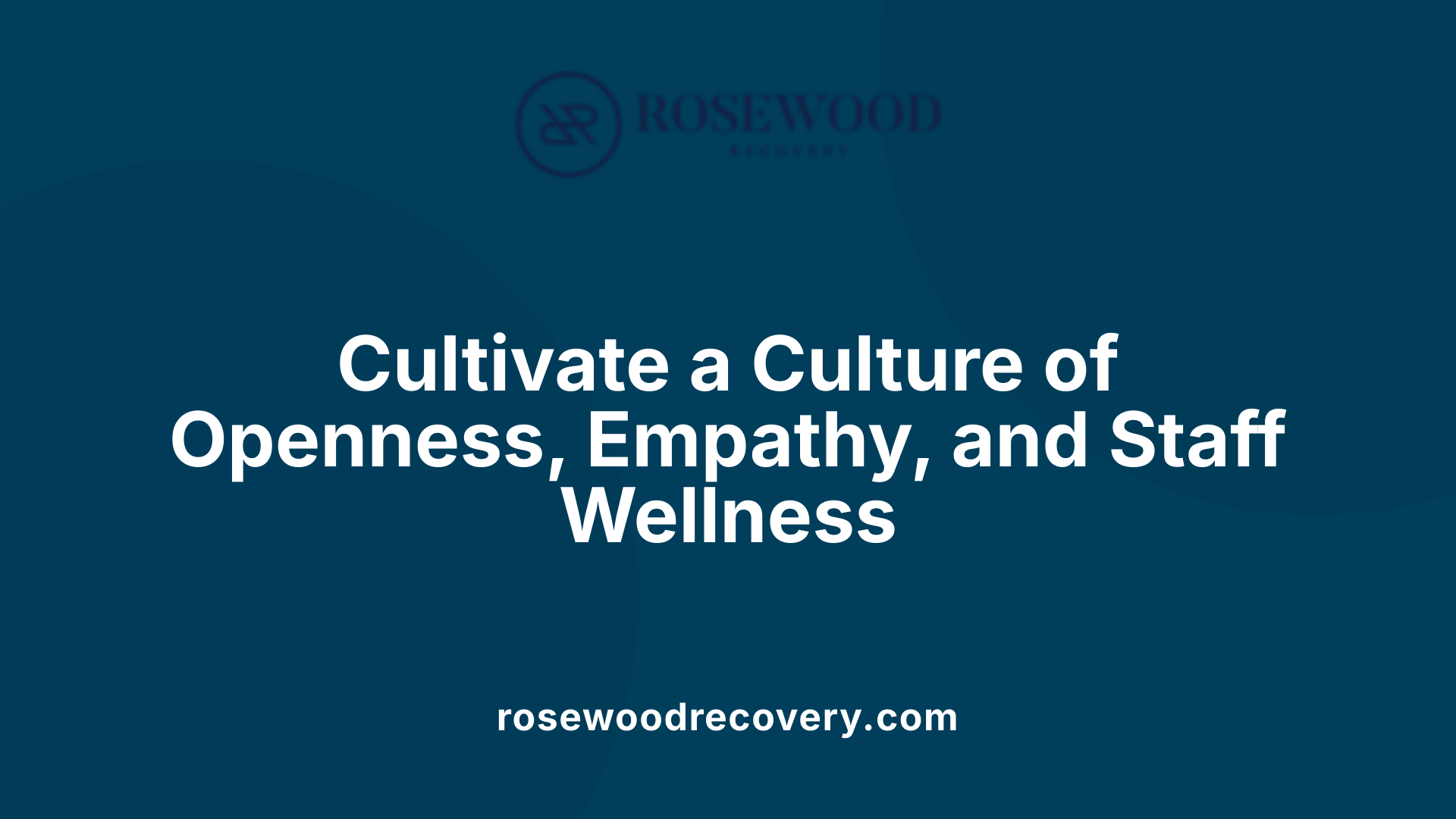 How does organizational culture and staff behavior influence emotional safety in outpatient settings?
How does organizational culture and staff behavior influence emotional safety in outpatient settings?
In outpatient healthcare environments, the atmosphere created by organizational culture and daily staff interactions plays a crucial role in establishing emotional safety. When organizational norms promote open communication, mutual respect, and transparency, they help foster a psychologically safe space where staff members feel valued and supported.
Leaders in healthcare organizations have an influential role in modeling behaviors that reinforce safety. When leadership demonstrates empathy, inclusivity, and accountability, it sets a standard that encourages staff to express concerns, share innovative ideas, and admit mistakes without fear of blame or retribution.
Organizational policies also significantly impact emotional safety. Policies that prioritize staff well-being, protect against harassment, and support continuous learning contribute to a secure environment. Conversely, policies that favor blame and punishment can create an atmosphere of fear and defensiveness.
A positive culture grounded in trust and collaboration contributes to lower stress levels, reduces burnout, and minimizes interpersonal conflicts. This supportive setting not only benefits healthcare workers but also leads to better patient outcomes as staff are more engaged and proactive.
On the other hand, environments that discourage openness or foster blame undermine emotional safety, leading to increased anxiety, reduced morale, and higher turnover among staff.
Therefore, intentionally cultivating a culture that values emotional safety—through leadership actions, organizational policies, and everyday staff behaviors—helps build resilient outpatient teams capable of providing compassionate, patient-centered care.
| Aspect | Impact | Examples |
|---|---|---|
| Leadership behaviors | Model empathy and transparency | Leading by example to promote trust |
| Organizational norms | Encourage open dialogue | Regular team check-ins, feedback channels |
| Policies | Support staff well-being and safe reporting | Clear procedures for reporting concerns |
| Outcomes | Foster resilience and reduce burnout | Improved staff morale and patient satisfaction |
Strategies for Building and Sustaining Emotional Safety
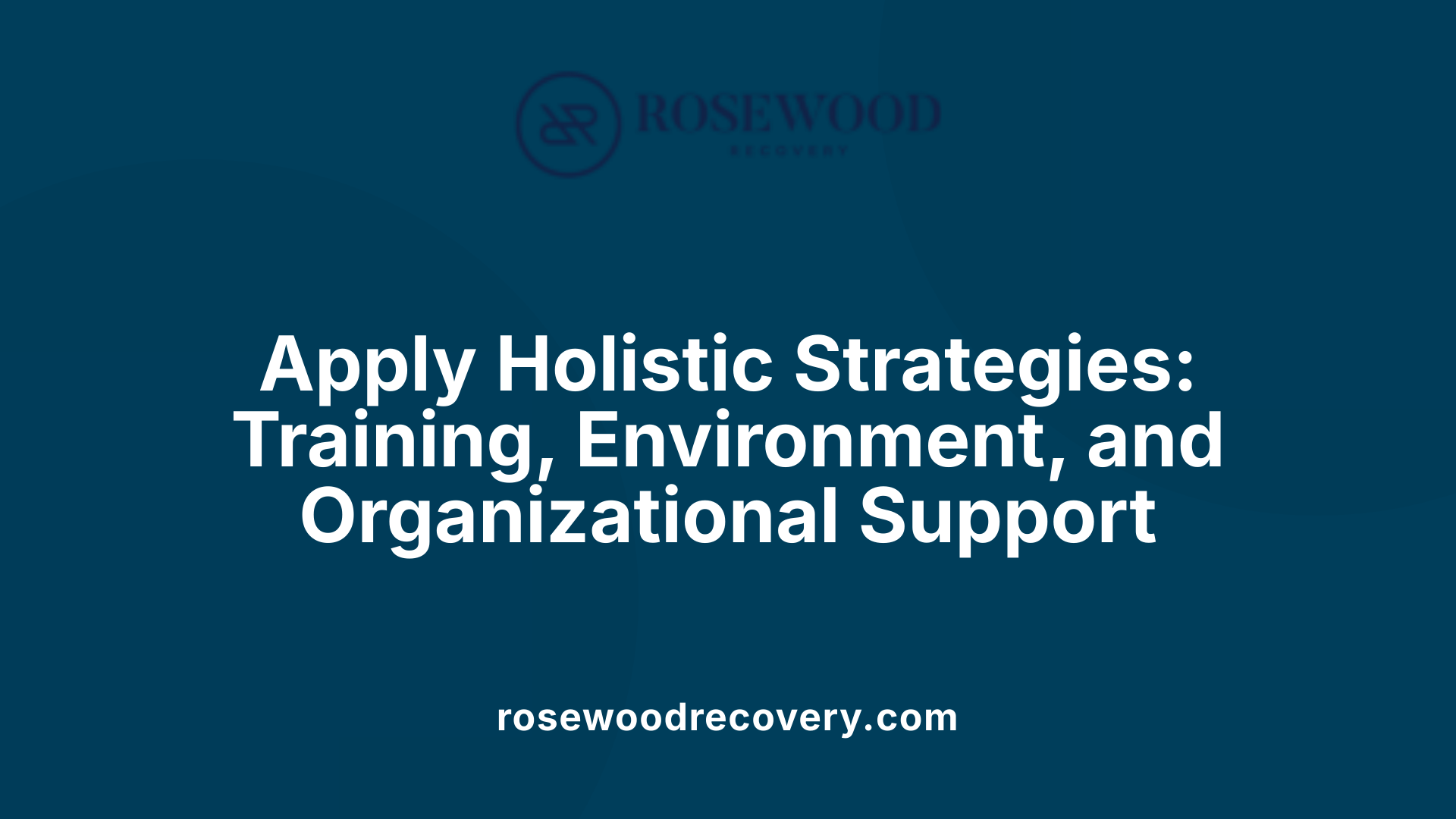
What strategies can help build and maintain emotional safety in outpatient healthcare environments?
Creating a safe and supportive outpatient healthcare setting involves multifaceted approaches that prioritize emotional well-being alongside physical safety. One fundamental strategy is implementing trauma-informed care practices, which recognize the impact of past trauma on patients and staff. This approach emphasizes respect, kindness, and understanding, ensuring that interactions do not re-traumatize individuals.
Cultural competence also plays a vital role. Tailoring care to respect diverse backgrounds and beliefs fosters trust and acknowledgment, making patients feel valued and understood. Training staff regularly on cultural awareness and sensitivity helps reduce biases and promotes inclusivity.
Open communication is essential. Encouraging honest, transparent dialogues allows patients to express concerns and needs comfortably. Active listening, empathy, and validating emotions are critical skills that healthcare providers should practice routinely.
Staff training programs focused on emotional safety equip team members with the skills to manage their responses, recognize signs of distress, and support colleagues and patients effectively. These programs often include modules on emotional awareness, mindfulness, and de-escalation techniques.
Environmental adjustments also enhance emotional safety. Creating de-stimulation spaces—quiet rooms or calming environments—reduces stress and helps both patients and staff recover from emotional overloads. Consistent routines and mindful workflow designs minimize chaos and unpredictability, contributing to a sense of stability.
Organizational policies should support ongoing mental health and self-care for staff. When teams feel supported emotionally, it translates into more compassionate patient care. Furthermore, leadership must model openness and vulnerability, setting a tone that prioritizes emotional well-being.
In essence, fostering emotional safety in outpatient care involves acknowledging emotional undercurrents, addressing both physical and psychological needs, and cultivating a culture of respect, transparency, and support. Such an environment not only improves patient outcomes but also enhances staff resilience and overall organizational health.
| Strategy | Implementation Focus | Additional Notes |
|---|---|---|
| Trauma-informed care | Recognize trauma impacts, promote safety | Use respectful language, avoid re-traumatization |
| Cultural competence | Respect cultural differences, tailored communication | Train staff on diversity and inclusion |
| Open communication | Foster honest dialogue, active listening | Encourage feedback, transparency in policies |
| Staff training | Emotional awareness, response management | Use simulations, role-play exercises |
| Environmental adjustments | Calm spaces, physical comfort | Incorporate natural light, soothing decor |
| Organizational support | Staff self-care, mental health resources | Implement routine check-ins, peer support groups |
Addressing both emotional and physical aspects of safety creates a resilient, trust-based healthcare environment. This holistic approach ensures that patients feel valued and secure, and staff are supported in delivering compassionate care.
Creating Clinician and Client Trust for Emotional Safety
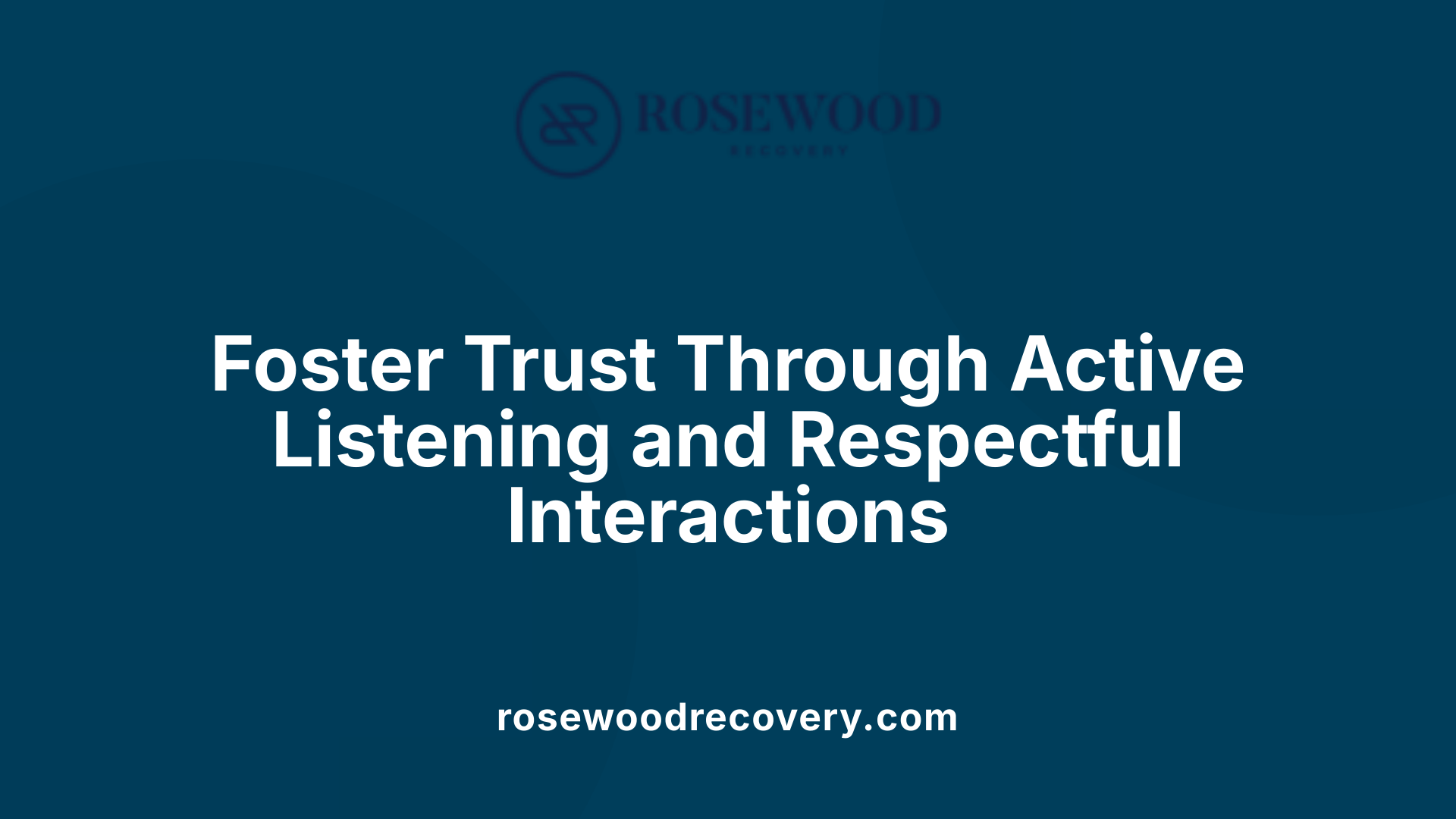
What techniques can clinicians use to foster emotional safety for clients, including trauma survivors and children?
Fostering emotional safety in therapy is crucial for effective healing and growth. Clinicians can begin by creating an environment that feels physically and socially welcoming. This includes comfortable furniture, calming decor, privacy, and a respectful atmosphere that values each client's unique background.
Active listening is one of the most essential skills. It involves giving clients full attention, validating their feelings, and showing genuine interest without judgment. When clients feel understood and accepted, they are more likely to open up and engage.
Respect for boundaries and cultural sensitivity significantly enhances safety. Clinicians should be aware of personal and cultural boundaries, ensuring all interactions are respectful, appropriate, and inclusive. This fosters trust and helps clients feel valued for who they are.
Applying trauma-informed techniques further supports emotional safety. These techniques emphasize safety, empowerment, collaboration, and choice. For trauma survivors, feeling in control of their treatment and having their autonomy respected reduces feelings of helplessness.
Evidence-based approaches like Trauma-Focused Cognitive Behavioral Therapy (TF-CBT), Eye Movement Desensitization and Reprocessing (EMDR), and Seeking Safety are effective tools. They address trauma sensitively and help clients process difficult memories while maintaining safety.
Clinicians should also prioritize ongoing staff training, supervision, and organizational practices that support staff wellness. A well-supported therapist is more capable of providing a consistent, safe environment for clients.
Building trust takes time and patience. Consistent transparency, collaboration, and kindness help establish a solid foundation of emotional safety. When clients feel that they are in a safe space where their feelings are validated and their boundaries are respected, their engagement and healing are significantly enhanced.
Best Practices for Developing an Emotionally Safe Environment
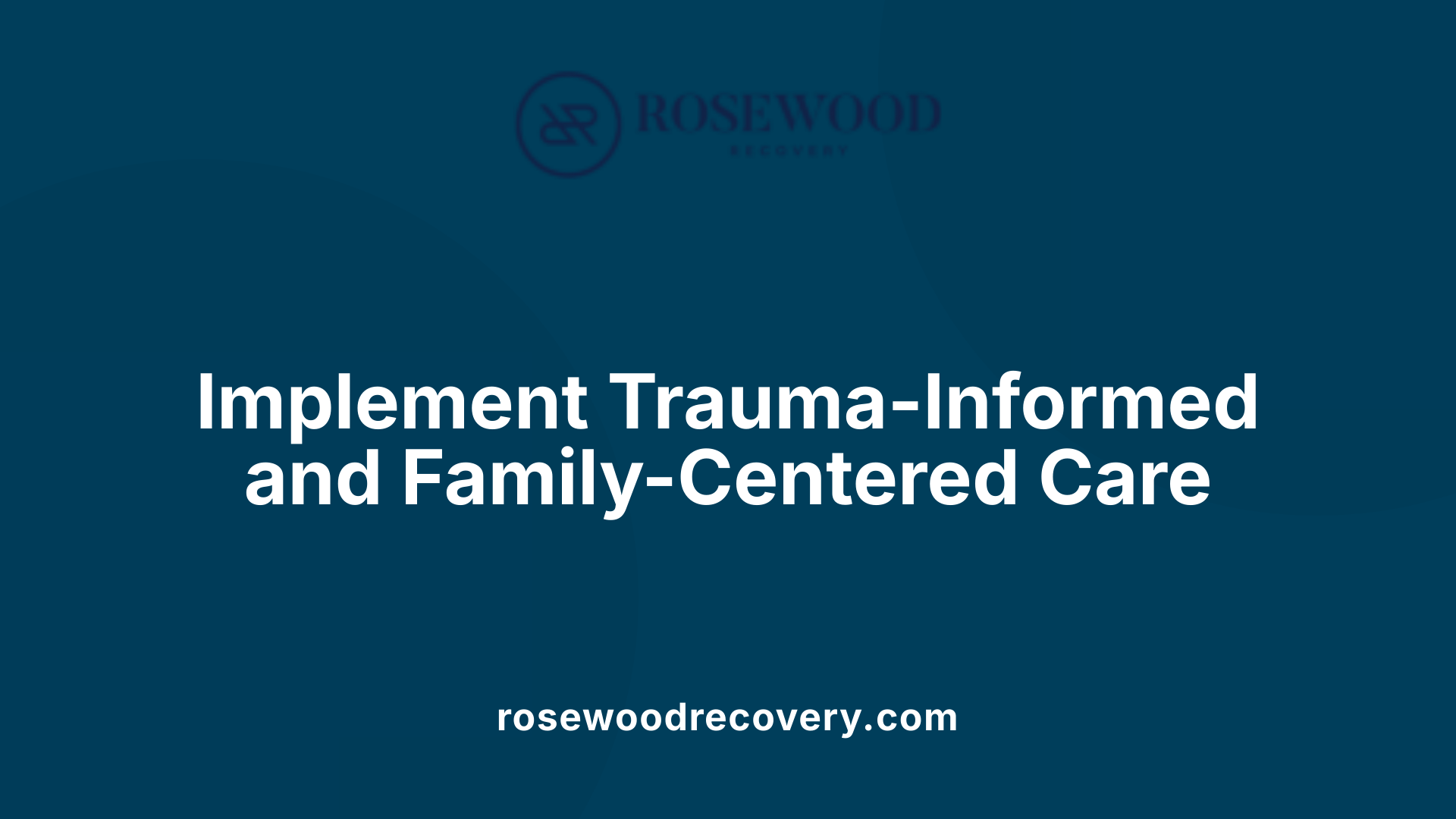
What best practices support establishing emotionally safe outpatient environments?
Creating emotionally safe outpatient healthcare settings involves a multifaceted approach that prioritizes trauma-informed and family-centered care. One fundamental strategy is implementing a comprehensive framework comprised of four core components: screening and assessment, environment modifications, intervention, and staff communication, education, and training.
Firstly, screening and assessment help identify individual needs, vulnerabilities, and trauma histories, enabling tailored care that respects patients' emotional and physical safety.
Environmental modifications include physical changes such as comfortable furniture, calming decor, good lighting, and privacy measures that make the space welcoming. Policies that promote physical safety—like secure entry points and clear wayfinding—are also vital.
Respectful communication and cultural awareness underpin the relational aspect of safety. Staff training in trauma-informed approaches ensures that every interaction fosters trust, validation, and understanding.
Organizational policies should actively support collaboration, transparency, and accountability. This promotes an atmosphere where patients and families feel heard and valued.
Staff training programs focused on trauma-informed care, effective communication skills, and secondary traumatic stress prevention equip healthcare providers to handle complex emotional needs competently.
Including children and families in decision-making processes, alongside multidisciplinary teamwork and leadership endorsement, ensures that safety practices are embedded at all levels.
Adopting evidence-based trauma treatment methods further enhances care quality and safety. Even small organizational shifts, such as consistent routines and respectful language, contribute to building a climate of trust.
In summary, establishing an emotionally safe outpatient environment relies on physical space improvements, organizational policies, continuous staff education, and active family involvement. These strategies together create a holistic setting where patients feel secure, respected, and empowered to engage in their care.
Supporting Trauma Survivors, Children, and Special Populations
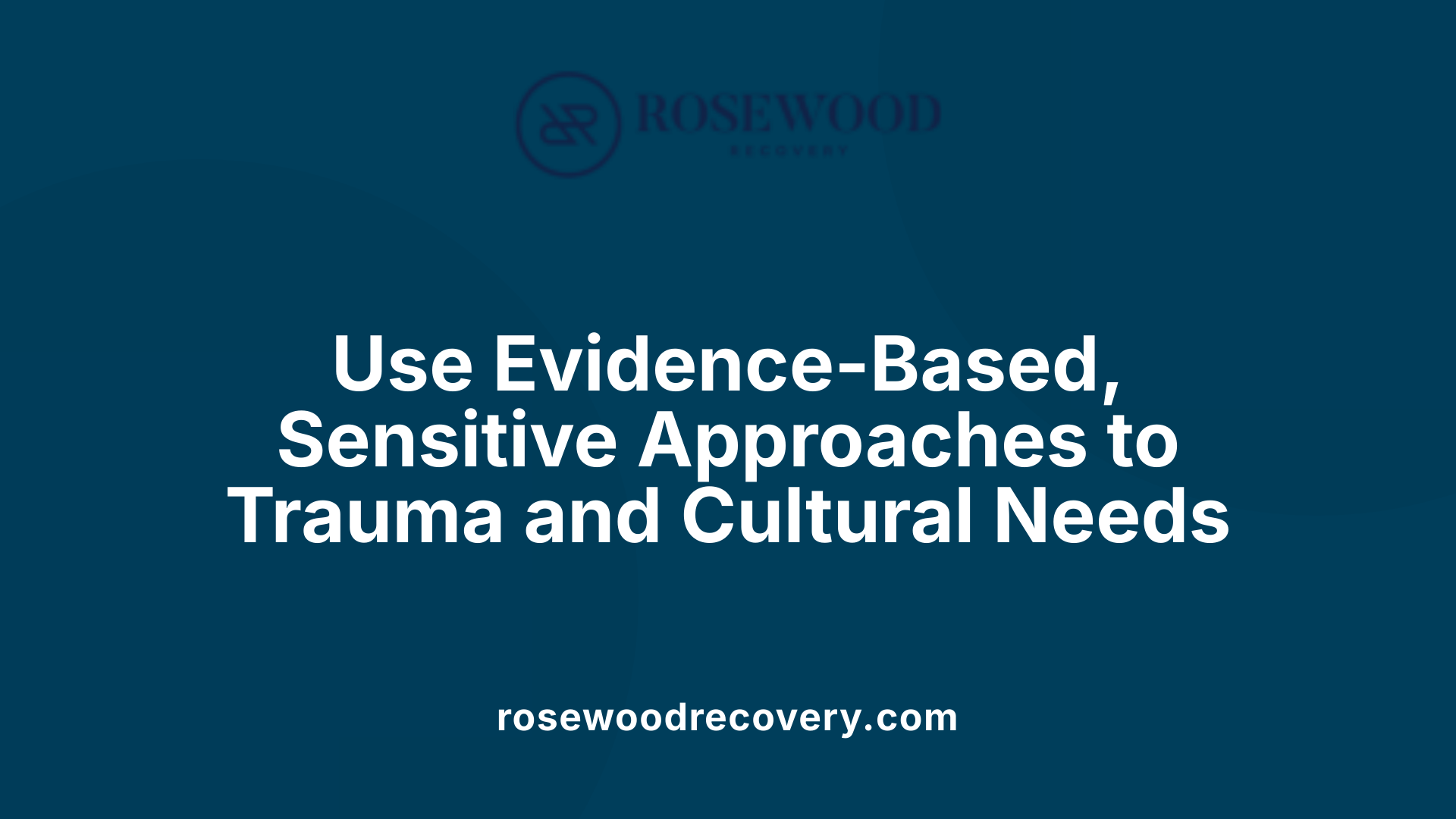
What techniques can clinicians use to foster emotional safety for clients, including trauma survivors and children?
Creating an environment that supports emotional safety is vital, especially when working with trauma survivors, children, and diverse populations. Clinicians should focus on establishing physical and social spaces that feel welcoming, safe, and respectful.
This involves practicing active listening and validation, ensuring that clients feel genuinely heard and understood. Transparency and collaboration help build trust, allowing clients to feel in control and empowered during their treatment.
Incorporating trauma-informed principles—such as prioritizing safety, promoting empowerment, and offering choices—encourages clients to engage more fully. Clinicians should also use evidence-based treatments tailored for trauma, like Trauma-Focused Cognitive Behavioral Therapy (TF-CBT), Eye Movement Desensitization and Reprocessing (EMDR), or Seeking Safety. These therapies are designed to be sensitive to trauma's effects and help clients process their experiences effectively.
Furthermore, ongoing staff training and supervision are essential. When healthcare organizations prioritize staff wellness and cultural humility, they create a more supportive atmosphere for clients. This approach ensures that care is individualized, culturally sensitive, and consistent with best practices.
Finally, attention to environmental cues—such as calming decor, privacy, and predictable routines—supports emotional safety for children and trauma survivors, helping reduce anxiety and fostering a sense of stability.
Below is a summary table illustrating important strategies for fostering emotional safety:
| Strategy | Implementation | Purpose |
|---|---|---|
| Respectful Environment | Clear boundaries, cultural sensitivity | Builds trust and comfort |
| Active Listening & Validation | Attentive and empathetic responses | Promotes understanding |
| Trauma-Informed Approaches | Use of TF-CBT, EMDR, Seeking Safety | Addresses trauma effects effectively |
| Staff Training & Supervision | Regular education and wellness checks | Maintains a safe, effective setting |
| Environmental Cues | Calming decor, privacy, routine | Reduces anxiety, increases stability |
Creating safe spaces in therapy or healthcare settings is an ongoing process that involves careful attention to environment, interpersonal skills, and organizational culture. When these elements are in harmony, clients feel supported and are more likely to engage in their healing journeys.
Fostering a Culture of Continuous Safety and Compassion
Creating and sustaining emotional safety within outpatient environments is a continuous, deliberate process rooted in compassionate leadership, cultural humility, and evidence-based practices. By prioritizing both physical and emotional dimensions of safety, organizations can foster trusting relationships, reduce staff burnout, and significantly enhance patient recovery and well-being. As safety becomes embedded in the organizational fabric, outpatient settings become nurturing spaces where healing, growth, and collaboration flourish.
References
- Practicing Emotional Safety in Healthcare - Dr. Karen Rigamonti
- Emotional Safety: What It Is and How to Develop It
- Therapist Help: Tips for Cultivating Emotionally Safe Environments
- Create a Safe Physical and Emotional Environment
- Creating a Safe and Comforting Environment for Therapy
- [PDF] Creating a Culture of Safety: A Guide for Health Centers
- [PDF] Goal: Implement a system that identifies patient and family ...




